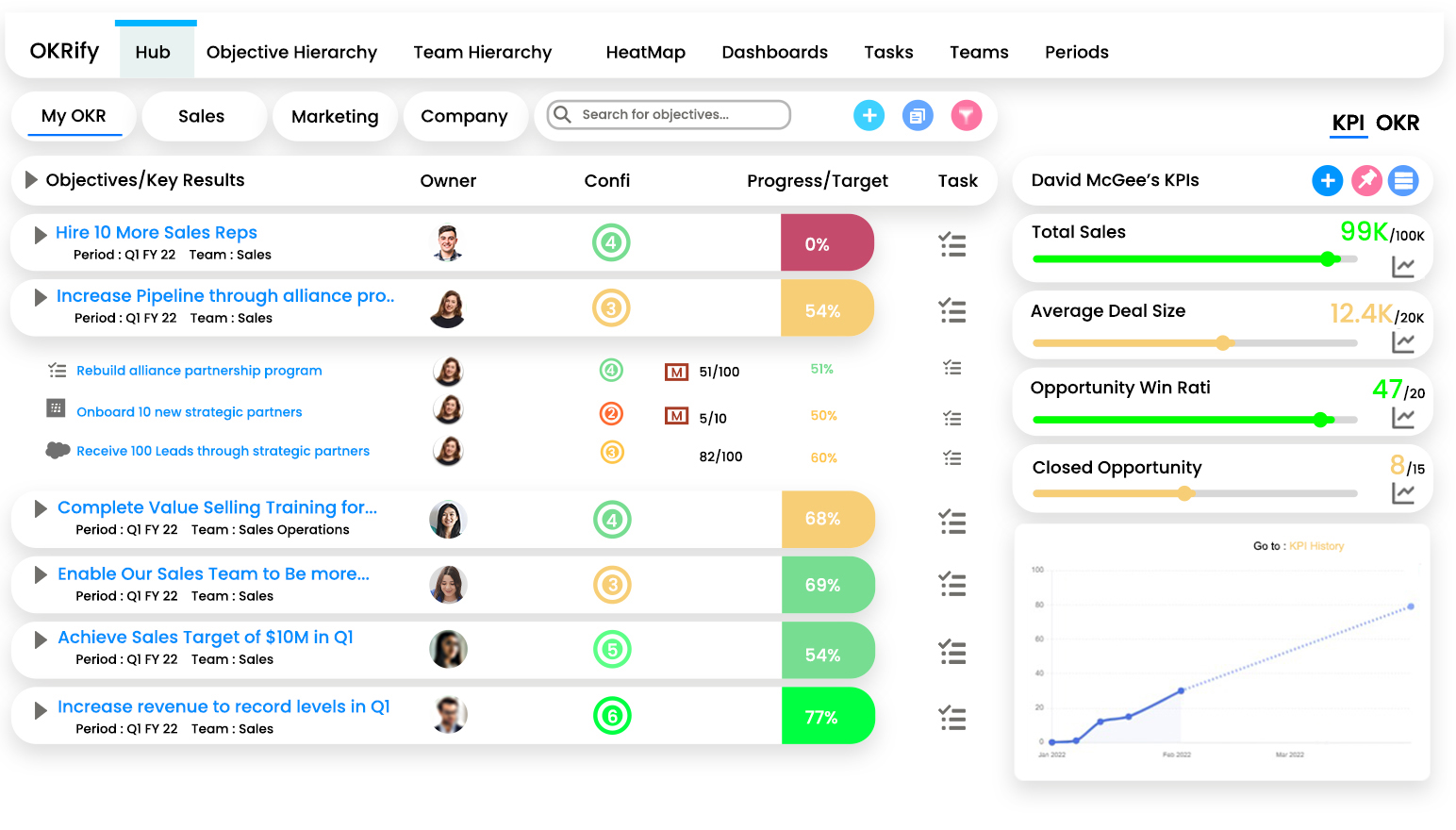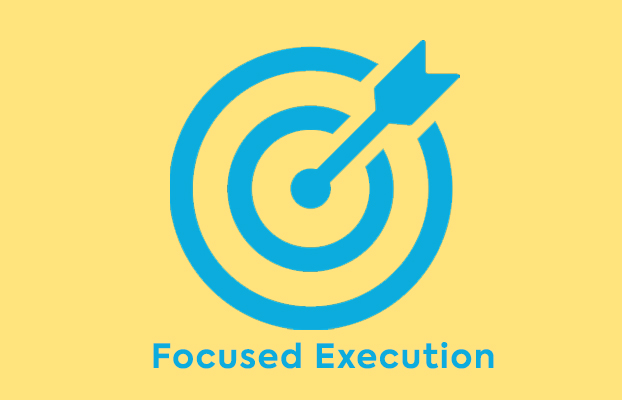In the ever-evolving landscape of business and project management, organizations are constantly seeking approaches that offer adaptability, collaboration, and results. The marriage of Objectives and Key Results (OKRs) with Agile methodologies has emerged as a powerful combination that enables organizations to foster innovation, embrace change, and drive success. In this article, we'll explore the concept of Agile OKRs, how they work, and why they're essential for businesses striving to remain competitive and adaptable.

Understanding OKRs and Agile
The Basics of OKRs
OKRs, short for Objectives and Key Results, is a goal-setting framework that helps organizations align their goals and measure their progress. An Objective is a clear, inspiring goal, and Key Results are specific, measurable milestones that indicate the achievement of that objective.
What is Agile?
Agile is a set of principles and practices used in software development and beyond to manage projects, improve collaboration, and respond to change effectively. Agile emphasizes iterative and incremental progress, customer feedback, and cross-functional teams.
The Synergy Between OKRs and Agile
Agile Values and OKR Principles
The intersection of Agile values and OKR (Objectives and Key Results) principles represents a harmonious synergy that fosters organizational success. Agile, with its core values of collaboration, customer satisfaction, and flexibility, seamlessly aligns with the fundamental tenets of OKRs, creating a powerful framework for driving progress and innovation. Let's delve deeper into how these two philosophies complement each other.
Collaboration and Alignment: Agile prioritizes collaboration among cross-functional teams, encouraging open communication and shared responsibility. This collaborative spirit is a cornerstone of OKRs as well. OKRs require teams to define their objectives and key results collectively, ensuring that everyone is aligned toward a common goal. This synergy promotes a sense of ownership and collective accountability that accelerates progress.
Customer Satisfaction and Outcomes: Customer satisfaction is one of the central values in Agile. It emphasizes the importance of delivering value to customers continuously. In the world of OKRs, this principle translates into setting customer-centric objectives. OKRs force organizations to focus on the outcomes and results that truly matter to customers, aligning the organization's efforts with their needs and preferences.
Flexibility and Adaptability: Both Agile and OKRs champion adaptability and flexibility. Agile encourages teams to adapt to changing circumstances, while OKRs provide a framework that allows organizations to pivot and reevaluate their objectives in response to new information. The combination of these principles enables organizations to respond rapidly to market shifts and emerging opportunities.
Continuous Improvement and Learning: Agile's iterative approach promotes continuous improvement through retrospectives and feedback loops. OKRs support this journey of improvement by setting stretch objectives and key results, challenging teams to push their limits and learn from their experiences. The cycle of setting, tracking, and evaluating OKRs naturally aligns with Agile's commitment to ongoing enhancement.
Transparency and Accountability: Agile and OKRs share a commitment to transparency and accountability. Agile promotes transparency through practices like daily stand-up meetings and visible work boards. OKRs make progress and performance visible to all stakeholders, fostering a culture of accountability and transparency that ensures everyone is informed and responsible for their part in achieving objectives.
Aligning OKRs with Agile Sprints
Aligning OKRs with Agile Sprints is a strategic approach that melds the structured cadence of Agile methodologies, such as Scrum, with the broader objectives outlined in OKRs. In essence, it creates a powerful synergy between short-term execution and long-term strategy. By incorporating OKRs into Agile sprints, organizations can harness the sprint's time-bound nature to foster a sense of urgency and laser-focused productivity. Sprints typically last two to four weeks, providing a succinct time frame within which teams can make tangible progress toward key objectives. This alignment ensures that the work carried out in each sprint is not just about completing tasks but is directly contributing to the attainment of overarching OKRs.
Moreover, integrating OKRs within Agile sprints promotes a culture of continuous learning and adaptation. At the end of each sprint, teams have the opportunity to evaluate their progress against the defined key results and adjust their approach as needed. This feedback loop enhances the iterative and adaptive nature of Agile methodologies. By incorporating OKRs, the teams can easily pivot their focus to address changing market dynamics or customer needs while still working towards the organization's strategic goals. This alignment helps teams remain nimble and responsive, making Agile sprints not just a means of achieving tactical goals but also a vehicle for steering the organization toward long-term success.
Overcoming Challenges
Common Pitfalls
No approach is without its challenges. Adopting an Agile methodology for OKRs (Objectives and Key Results) can be a powerful way to align strategic objectives with iterative, flexible execution. However, this approach comes with its own set of challenges. Here are some common challenges in adopting Agile methodologies for OKRs:
Cultural Shift: Shifting from traditional, hierarchical structures to Agile can be challenging. It often requires a cultural shift within the organization, including fostering a mindset of collaboration, adaptability, and continuous improvement. Resistance to change is common.
Misunderstanding Agile: There can be misconceptions about Agile, leading to misapplication of its principles. Some organizations may adopt Agile methodologies but fail to fully embrace the Agile mindset and principles, resulting in suboptimal results.
Scalability: While Agile is highly effective for smaller teams and projects, scaling it up to larger organizations can be challenging. Maintaining agility and adaptability across the entire organization can be difficult.
Time and Resource Constraints: Agile often requires more frequent communication, coordination, and adaptation. This can strain resources and time, making it challenging to sustain Agile practices while meeting deadlines and budgets.
Balancing Short-Term and Long-Term Goals: Agile is known for its short-term, iterative approach, which may sometimes conflict with long-term strategic planning and objectives. Striking the right balance between short-term agility and long-term vision can be challenging.
Conclusion
Agile OKRs represent a powerful approach to goal-setting and strategy execution. By combining the flexibility and adaptability of Agile with the structured goal-setting of OKRs, organizations can achieve their objectives, foster innovation, and remain competitive in an ever-changing business environment. Embracing Agile OKRs is a strategic move towards sustainable success and continuous improvement.
Free licenses and special discounts for nonprofits making this world better.
Achieve your organization's mission with OKRs
OKRs is a simple, flexible goal setting framework that can help in set clear expectations and purpose for employees & volunteers, align everyone behind the mission for focused execution.




